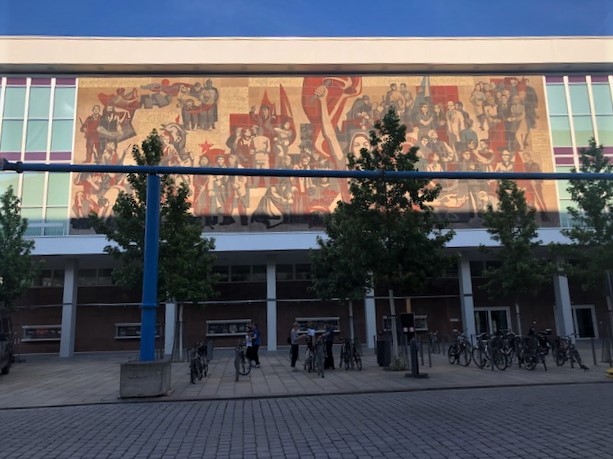Dresden is almost too beautiful to be real. When the late afternoon sun shines on its churches and palaces, it almost takes your breath away. The Frauenkirche (Lutheran Church) sits in the middle of the old town center like a beautifully iced cake on a platter; just one of the many baroque architectural gems in this town which, until 1989, was part of communist German Democratic Republic (GDR). The city was completely devastated by Allied bombings in 1945, practically every building was demolished. For 45 years after that, Dresden and its old town lay in ruins. Mountains of rubbles lay everywhere, untouched by the communist government, as a propaganda about the devastation of capitalist warfare.

The GDR constructed numerous buildings around the old town, punctuating the once baroque town with low and wide glass and concrete buildings that are quintessential socialist and communist architecture. The Kulturpalast (Palace of culture, 1962) at the edge of the reborn old town is a classic example of communist architectural expression of social order. One side of the building is decorated with a striking mural called “The Way of the Red Flag,” adding color, albeit a symbolic red, to an otherwise grey concrete exterior.

The long narrow mural, is approximately 95 feet high and 325 feet wide, and tells the history of socialism. Almost to the center stands its most striking feature, a woman with a scarf typical of the socialist working class, her left hand stretched out in a welcoming gesture, while her right hand holds a red flag. The raised flag leads the eye toward the hammer and sickle symbol of the GDR. The story starts on the left half of the mural where Karl Marx (with a document in his hands) can be seen standing with Freidrich Engels. Below them a group of three men arm themselves in protest, and to the right we see the Red Star a sign of the Russian revolution of 1914. World War II, and its suffering, is depicted to the right of the flag bearer. The victory of socialism is seen in the depiction of groups of men of various professions, some holding guns while others raise their right fists. All seem to be looking towards the central figure of Walter Ulbricht the communist leader of GDR.

I discovered the mural almost by accident and stood in front of it for a long time, marveling at it, and shocked both by its existence and its contrast with the baroque architecture of Dresden’s old town. The fact that the Kulturpalast and the mural exist to this day, 30 years after the fall of communism, is a testament to the people of Dresden. The people of this Dresden have rebuilt their town back to its former Baroque glory from the debris that remained after World War II. Their love for art and architecture is evident from the fact that despite the passage of time, almost 40 years passed before communism fell, they started rebuilding brick by broken brick as soon as they could after reunification . It is only a city that has suffered and lost so much that will not be quick to tear down art, even if it is communist art. And we, the visitors, leave Dresden enriched, by both the people and the art and architecture of this beautiful city.